What is the diameter of my rope?

Which diameter are my ropes?
Ropes come in many different diameters and there are guidelines to help you choose the right diameter for your purpose. But how do you know which diameter the halyards and sheets on your boat are? How do you measure the diameter?
How is the diameter of a rope determined in the production process?
The diameter of a rope is based on the combination between the construction of the rope and the amount of material used. A rope can be heavy and compact, or light and loosely braided. This influences the properties of the rope and therefore can affect the measurement of the size. A loosely braided rope gets thinner and flattens out under load, whereas a compact rope with more fibres will keep its shape. This is why measuring the diameter when the rope is under load will have different result as to when the rope is not loaded.
Due to this, the diameter of rope is less precise than with steel wire. Determining a diameter for ropes is an empirical process. This means that every manufacturer develops and adapts a rope, based on observation and experience. This causes the possibility for small differences between ropes with, according to the specification, the same diameter. A rope that is specified as a 10mm rope can therefore sometimes be 9mm or in other cases 11mm.
Measuring the diameter with a caliper
The most common way to measure the diameter of a rope is with the use of a caliper. But what is the correct way to do so? A lot of things can influence the measuring process. First, it is important that the rope is not under load.
In our experience not everybody finds it easy to measure correctly. Therefore we have a few tips to help you out:
Tip 1: Measure around the rope with the full length of the caliper. This will allow you to measure over a longer distance and avoid squeezing the rope and possibly measuring the wrong diameter.
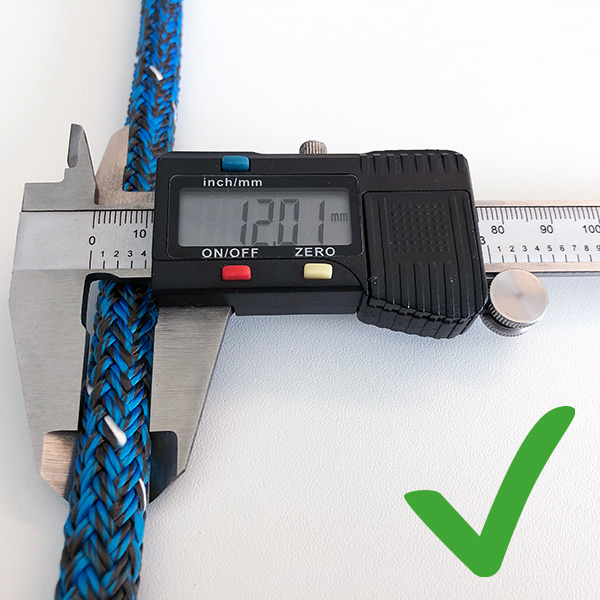
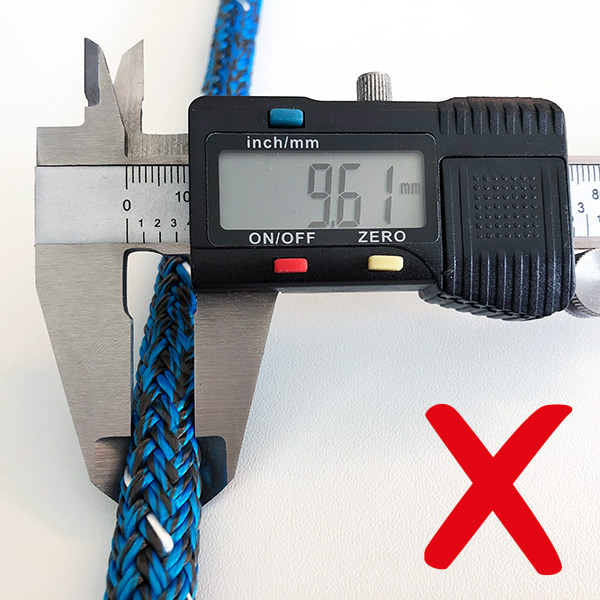
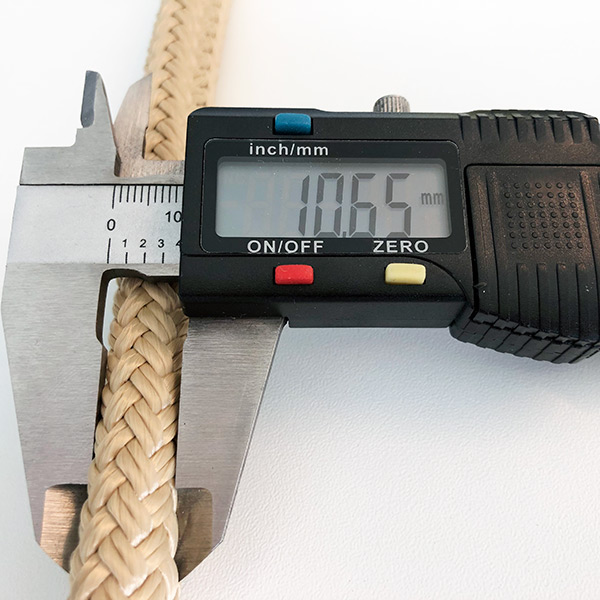
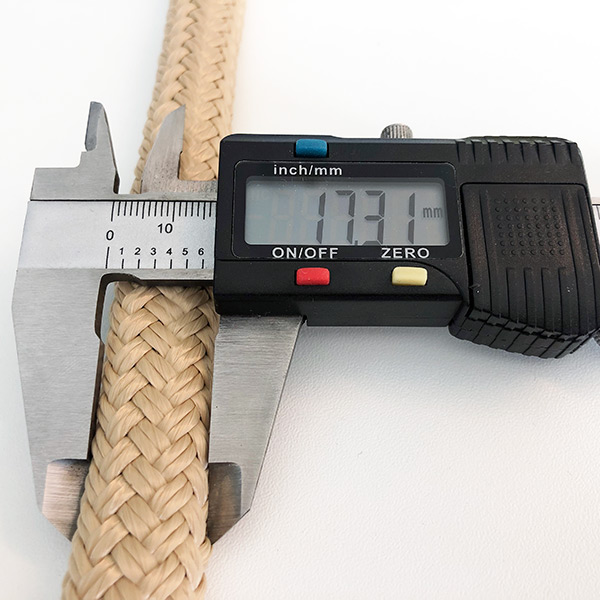
Tip 2: Some ropes are not (fully) round and have a flatter construction. In that case it is important to measure twice. Measure the thinner part of the construction and the thicker part separately. You will have to take the average of the two measurements to get the correct diameter of the rope.
Tip 3: If you are in doubt, measure the rope at multiple points. You thus create several measuring points. The average of these measurements will give you the overall diameter. Do not measure near splices! The rope will be thicker at these points.
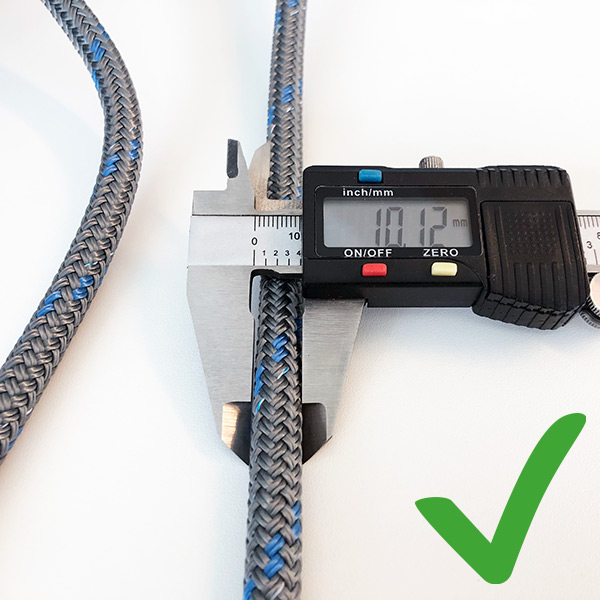
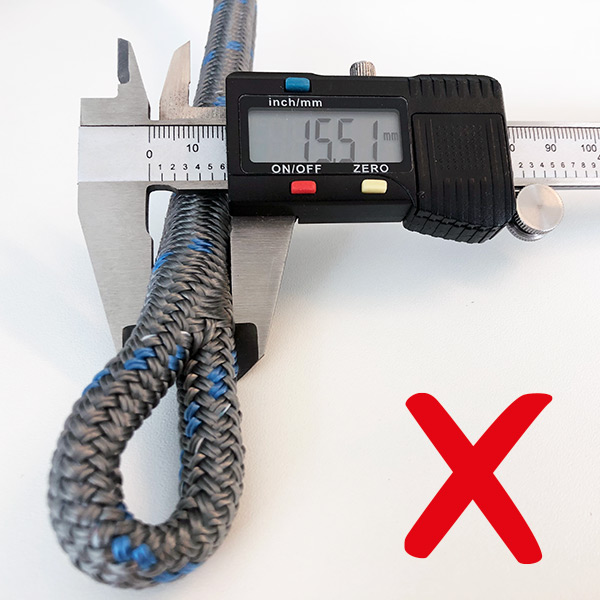
Measuring without a caliper
If you don’t have a calliper at hand, there is another way to measure the diameter. Determine the circumference of the rope with a small thin string or whipping twine. Measure the length of the string with a ruler and divide the number by π (3.14159). This should give you the diameter of the rope.



I have determined the diameter and now what?
If you have finished measuring and find that the diameter is available, for instance a 12mm, then it is easy to order a new line in the correct diameter.
It is more complicated if you measure 9mm for example. Should you choose an 8mm rope of 10mm? We recommend you to have a look at our rope diameter advice to help you make the right choice. Or you can always contact us for tailor-made advice.
Rope selection tool
To help you select the right ropes for your boat and purpose, we developed a rope selection tool. We provide step-by-step advice for each type of boat!

